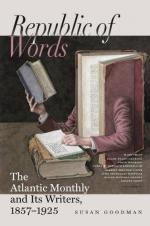Again, the crow is sometimes looked upon as a mere marauder; but this description also is much too narrow for him. He is anxious only for his dinner, and swallows seed-corn and noxious grubs with perfect impartiality. He is not a mere pirate, living by plunder alone, but rather like the old Phoenician sea-farer, indifferently honest or robber as occasion serves,—and robber not from fierceness of disposition, but merely from utter unscrupulousness as to means.
This is shown in his docility. A hawk or an eagle is never tamed, but a crow is more easily and completely tamable than the gentlest singing-bird. The one I have just spoken of, though hardly six months from the nest, would allow himself to be handled by his owner, and would suffer even a stranger to touch him. When I first came near the house, he greeted me with a suppressed caw, and flew along some hundred yards just over my head, looking down, first with one eye and then with the other, to get a complete view of the stranger. Next morning I became aware, when but half awake, of a sort of mewing sound in the neighborhood, and at last looking around, I saw through the window, which opened to the floor, my new acquaintance perched on the porch roof, which was at the same level, turning his head from side to side, and eyeing me through the glass with divers queer contortions and gesticulations, reminding me of some odd, old, dried-up French dancing-master, and with a varied succession of croakings, now high, now low, evidently bent upon attracting my attention. When he had succeeded, he flew off with loud, joyous caws to the top of the house, where I heard him rolling nuts or acorns from the ridge, and flying to catch them before they fell off.
Their independence of seasons is shown also in their habit of associating in about equal numbers throughout the year. In the spring the flocks are more noticeable, hovering about some grove of pines, flying straight up in the air and swooping down again with an uninterrupted cawing,—seemingly a sort of crow ball, with a view to match-making. Afterwards they become more silent, and apparently more solitary, but still fly out to their feeding-grounds morning and evening; and if you sit down in the woods near one of their nests, the uneasy choking chuckle, ending at last in the outright cawing of the disturbed owner, will generally be answered from every point, and crow after crow come edging up from tree to tree to see what is the matter.




